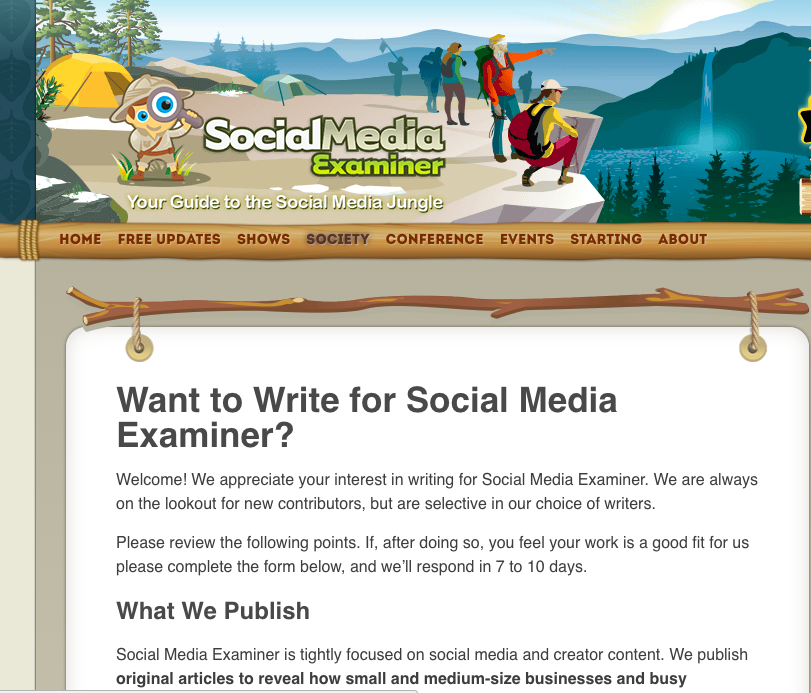
10 Free (or Nearly-Free) Marketing Strategies for New Entrepreneurs
That being said, there are plenty of free (or very low cost) ways that you can market your business. Plus, these strategies allow you to get creative, and really focus on adding value through your own voice and expertise within your industry—which is a win all around.
Email marketing is the bread and butter of a startup or small business marketing strategy, and for good reason: it’s a solid, basic way to market your business, it’s flexible, and it generally only costs time.
Drip is the gold standard for free email marketing tools, as it offers a free plan with advanced marketing automation capabilities (you can upgrade to the paid version once your list grows to a larger size). It’s the email tool we use at Bidketch.
There are tons of resources on how to build a strong email marketing campaign (this article by Drip is a good starting point), as well as plenty on how to build your email list. While the specifics will vary by industry, creating some type of lead-capturing initiative on your website is generally the first step. This could be anything from a download that collects emails, a popup where visitors can sign up for your newsletter, or some other type of content that involves the exchange of email for a free asset (we’ll talk more about what that could look like in tip six).

Try content marketing
In terms of free and low-cost marketing initiatives, content marketing still reigns supreme. While plenty of content marketing strategies might not be exactly free (it does cost some money to create a blog, for example), they tend to be one-time or low expenses that you can then take advantage of for an extended period of time.
Leverage social media
However, when approaching social media from a content marketing perspective, it becomes clear that it’s less about just throwing something against the wall and seeing what sticks, and more about creating a cohesive strategy for your business via social media.
This might mean critically evaluating your business, and determining which channels align best with both your offering and your goals. Is your product, service, or branding highly visual? A channel like Instagram is probably a good bet. Is your goal to create an interactive community? Facebook may serve your needs best. Trying to reach a wide audience, engage in conversations, and position yourself as a thought leader in your space? Twitter might be right for your business. It’s important to also consider the demographics of your target audience, and see which platforms are the best match.
While you may have to do a solid amount of research at the outset, you’ll emerge with a clearer idea of which platforms are going to give you the biggest bang for your metaphorical buck. While free, social media marketing can be hugely time-consuming—so narrowing your focus from the get-go is ideal.
Blog or create another web presence based around thought leadership
Creating a blog is standard advice for any new business owner, and for good reason. By having an SEO-optimized website and blog, you’ll be able to build a web presence, increase your placement in search rankings, and be found by more people.
However, if you approach blogging solely from this standpoint, it becomes a chore at best, and an ineffective, transparent marketing ploy at worst. Rather, think first about where you can best contribute to your space and position yourself as a thought leader by creating great content.
Maybe this looks like creating a traditional, written blog—or maybe it doesn’t. Maybe you’d rather create a YouTube channel with educational videos. Maybe you’d rather bypass blog creation entirely and use Medium as a place to share your content.
The make takeaway here is that at this point, “start a blog” is such standard marketing advice that it starts to ring a bit hollow. The really important piece of advice is to remember that content marketing should be about creating valuable content first, and should be a place for you to share your expertise with a wider audience based on the value of what you bring to the table. Determine what that is, and how best to share it, and go from there.
Boost Your Social Media Content
In fact, paid ads are expected to generate over $18 billion in revenue in 2019. 76 percent of B2C content marketers in North America used promoted posts in 2016, with 61 percent reporting these posts were effective. Social ads ranked slightly lower, with 74 percent of B2C marketers using them and 59 percent reporting them effective.

Visual content continues to grow in popularity as we move into the future. After all, the human brain processes images 60 times faster than words. When you’re brainstorming small business marketing ideas, consider video.
Video content (think Snapchat, Instagram Stories, Instagram Live, Facebook Stories, and Facebook Live) is continuing to grow. If you want to be on the cutting edge of visual content, try moving out from behind your keyboard and step in front of the camera.
Pro tip: For even higher engagement and impact, add captions to your video instead of solely relying on your audio. As much as 85% of videos are watched without sound. Makes sense when you think about all the people scrolling through social media while at work, at the doctor’s office, or on public transportation.
Video is also an easy and effective way to engage your audience. Hubspot found 72% of people prefer video to learn about a product or service. More and more consumers are using their smartphones in place of a computer, and visual apps like Instagram, Snapchat, and YouTube make posting and viewing and sharing content like pictures and videos super easy.
Keep an Eye on Reviews
Consumers have a lot of power with online reviews, making them more important than ever. This can feel overwhelming for businesses, but online reviews are also an excellent source of referrals.
We’ve written a lot in the past about how referrals are the best-kept secrets for your business, but if you don’t have a review monitoring process in place, it’s time to do that. Yelp, Facebook, Google, Angie’s List, and more are all places customers and buyers go to do their research before committing to a business or product.
If you see a negative review, there’s no need to panic. Respond the best you can without provoking an already unhappy customer. Often this means asking to speak offline so you can work with them one-on-one instead of in the public online arena. Remember, you can’t please everyone all of the time, so focus on building loyalty. If you’re doing good work, eventually that negative review will be just a blip on your positive review radar.
Maintain strong customer relationships
Establishing deep, meaningful connections with your audience is a subtle marketing strategy that helps you build customer loyalty. All your teams – from marketing to sales to support – should listen carefully to customers’ needs and respond with patience and respect. Make an effort to engage in social listening by proactively holding conversations on social media and taking your customers’ feedback to heart.
It’s particularly important to follow up with past clients. Even after your clients complete a purchase, continue to engage them with thoughtful treatment and valuable content. One idea is to give them a gift as part of your holiday marketing efforts. If you show them continuous care, they are far more likely to return to you for more. In fact, studies have shown that 93% of customers are likely to make repeat purchases with companies that offer great customer service.
Sources:
https://www.bidsketch.com/blog/marketing/free-marketing-strategies/
https://www.outboundengine.com/blog/marketing-ideas-for-small-business-owners/
https://www.wix.com/blog/2015/07/24-effective-ways-to-get-free-marketing-for-your-small-business/
Small Business Marketing Ideas & Tips for SMB Business Owners

Optimize Your Emails
Most people feel like they get a lot of emails. Some may say too many, yet 86% of consumers prefer email when communicating for business purposes. Long story short: email shows no signs of slowing down because of how effective it is.
Email marketing for small business owners is an important but tricky business. Great content doesn’t guarantee that recipients will open your email. There are, however, ways to improve audience engagement, open rates, and conversions.
1. Sender address. Make sure your emails are coming from a recognizable sender name, preferably a business address.
2. Subject line. Does it tell the reader what’s next? Is what’s next worth clicking? If not, you’d better head back to the drawing board.
3. Design. Is your content optimized for mobile viewing? Does it deliver on the promise of your subject line? Is it visually appealing and easy to read?
4. Call to action. What is your call-to-action (CTA)? Do the recipients know what you want them to do? Is it easy for them to do it?
1. Build an SEO-Friendly Website
The first thing that any new business needs is a website where people can learn about your business and buy your products or services. If you build a website that is optimized for both the search engines and conversions, then you’ve already crossed the first hurdle.
For any business, it is important to connect with their target audience and form a distinct brand image. Telling your brand story is a brilliant and effective way to achieve that.
Brands that are authentic and have a good story about how they came to be are often more memorable and form lasting impressions. So, if you want people who hear about your brand for the first time to remember it, tell them your brand story.
Burt’s Bees, for example, takes advantage of every chance they get to tell the wonderful story of how the brand came to be. It is a simple story of boy meets girl, falls in love, and creates something that will live long after they’re gone.
They have a detailed “About Us” section on their website and have a separate page for telling their brand story. It also includes major milestones in the founders’ lives and the brand’s history. The use of videos and pictures to tell the story is remarkable and memorable.

10. Look for Guest Posting Opportunities
By posting on the site, you and your brand will be exposed to a much larger audience. You’ll likely include links to your own site, which could have a positive effect on your traffic. And overall, you stand to collect a much bigger return on investment.
Your first job is finding a place to post. Luckily, you’ll find many top blogs are happy to accept guest blogs (if you’re a marketer, find a big list of opportunities here) . Otherwise, it’s a matter of searching them out, finding the proper contact info, and making your pitch.

Sources:
https://www.outboundengine.com/blog/marketing-ideas-for-small-business-owners/
https://influencermarketinghub.com/marketing-ideas-small-business/
https://johnlincoln.marketing/marketing-ideas-small-businesses/



